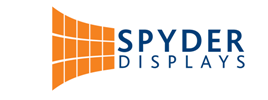Beating The Deadlines: Step-By-Step Guide To Trade Show Planning
Perfect timing is critical for trade show planning. Here’s an exhibiting task schedule to help you stay ahead of the deadlines.
When you’re planning for a show of any size, the logistical details can seem overwhelming. One method of control is to develop a time line to help you stay on top of each detail. Think of it as your “to-do” list.
The following outline provides you with a basic list of details you need to track when planning for an exhibition or trade show. (Feel free to add your own items.) Keep in mind that the suggested time frame (three months out, two months out, etc.) is just that – a suggestion. Your timetable may differ slightly depending on the complexity of the project. Use this as a guideline to develop your own ideal show planning time line.
12 Months Out
- Determine purpose for participating in the event.
- Select space: Study floor plans, traffic patterns, services, audience makeup.
- Read contract carefully: Understand terms, show rules, payment schedule, space assignment method (by product category, seniority, membership, etc.).
- Send in space application and first payment.
- Prepare budget.
Six Months Out
- Determine your exhibition objectives.
- Select primary vendors (exhibit house, transportation company, installation/dismantle supplier).
- Decide if new exhibit is needed. If so, begin design process. (If using a portable, the design process may not require this much lead time.)
- Plan show advertising.
Four Months Out
- Select staff.
- Make airline, hotel and car reservations.
- Determine exhibit needs (if using existing properties): refurbishments, additions, changes.
- Select display products.
- Plan inquiry processing procedures.
- Communicate with primary vendors (exhibit house, shipping, installation/dismantle) regarding services needed and dates.
- Develop floor plan for exhibit.
- Finalize new exhibit design.
- Execute show-related advertising.
Three Months Out
- Carefully read and review exhibitor manual.
- Select portable exhibition display supplier.
- Review exhibit floor plan and note target dates and restrictions.
- Plan any in-booth presentations/demonstrations.
- Create list of required services, noting deadlines for “early-bird” discounts.
- Distribute show plan to staff.
- Reserve any additional meeting rooms (hospitality events, press conferences, etc.)
- Select catering menus (for hospitality events, press events, etc.)
- Meet deadlines for free publicity in the exhibitor guide/preview.
- Submit authorization form if you are using an exhibitor-appointed contractor.
- Plan pre-show meeting.
Two Months Out
- Preview new custom display stand.
- Finalize graphics art/copy.
- Order staff badges.
- Send information to other departments exhibiting in booth.
- Create and order lead forms. Finalize inquiry processing procedures.
- Prepare orders for: drayage, electrical, cleaning, floral, etc. Take advantage of any pre-pay discounts.
- Follow up on all promotions, making sure everything is ready to ship by target date.
- Prepare press kits.
- Check with staff on airline and hotel reservations and travel dates. Make needed changes.
- Develop briefing packet for booth staff.
- Schedule training for booth staff at show.
- Send reminder to upper management about briefing meetings (in office and at show); include agenda.
One Month Out
- Follow up on shipping orders.
- Follow up on installation/dismantle schedule; get an estimate on costs.
- Call to reconfirm airline, hotel and car reservations. Make needed changes.
- Follow up on target dates with all vendors.
- Confirm availability of display products/literature.
- Preview new portable display.
- Send all needed materials by target shipping date to avoid express mail shipments.
- Distribute briefing packet, including training materials, to all booth staffers.
- Set up and hold pre-show briefing meeting in office.
- Set up in-booth conference room schedule for pre-arranged meetings at show.
- Send follow-up reminder to upper management about briefing meeting, include agenda.
- Determine date and time for briefing staff at the exhibit. Review agenda, purpose of show, demonstrations, rehearsals, show specials, etc.
- Ensure that you have the following items before leaving for the show: traveler’s checks, credit cards, copies of all orders and checks for services paid in advance, phone numbers and addresses of all vendors, engineering certificate for exhibit, shipping manifest, return shipping labels, and additional badge forms.
Upon Arrival
- Check on freight arrival.
- Check with hotel about reservations for staff, as well as any meeting rooms and catering orders.
- Find service area. Meet electrician and confirm date and time for electrical installation.
- Supervise booth setup.
- Hold pre-show briefing and training for staff the day before the show.
During Show
- Reserve next year’s space.
- Conduct daily meetings with staff.
- Make arrangements for booth dismantle and shipping.
- Arrange for lead forms to be shipped back to office daily for processing.
After Show
- Supervise booth dismantle.
- Handle leads.
- Debrief staff.
- Send thank-you notes.
(Article from Exhibitor Online – Feb 2009)
Spyder Displays supplies the Australian market with a comprehensive range of tradeshow and exhibition display stands, banner stands and roll ups, brochure stands, modular displays and counters.
